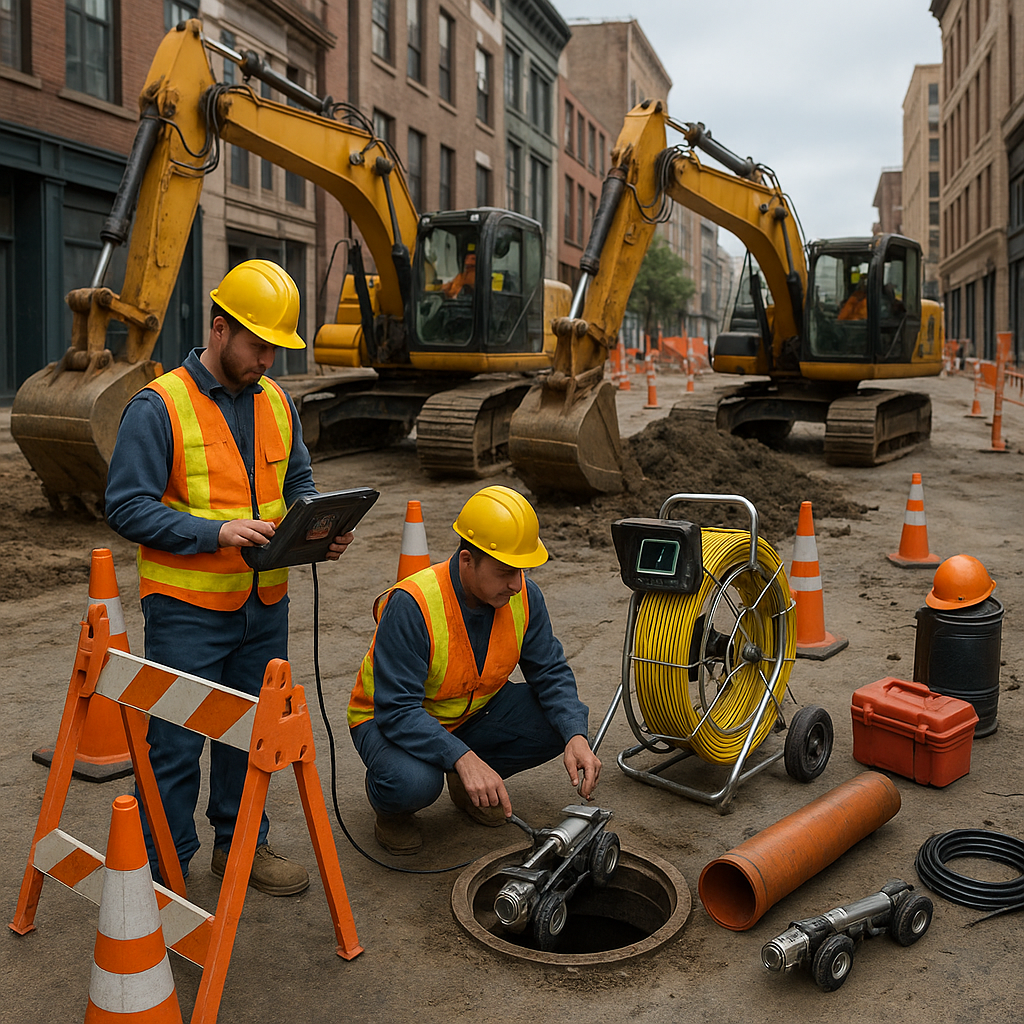Advanced Clay Pipe Inspection Techniques
Explore cutting-edge technologies for efficient clay pipe inspection, enhancing accuracy and reducing costs.

Advanced Clay Pipe Inspection: Revolutionizing Sewer Maintenance
Introduction
Clay pipes, a staple of sewer infrastructure in many regions, are known for their durability but also present unique challenges due to their brittleness and susceptibility to root intrusion and cracking. As infrastructure ages, the need for precise and efficient inspection methods becomes critical. This article delves into the latest technologies and practices revolutionizing clay pipe inspection.
New Technologies and Equipment
Robotic and Multi-Sensor Systems
The integration of robotic systems equipped with high-definition cameras, LiDAR, and sonar has transformed sewer inspections. These systems autonomously navigate clay pipes, providing:
- 3D Mapping: Highly accurate 3D models to identify defects such as cracks and blockages.
- Detailed Imagery: High-resolution images for precise diagnosis of issues like root intrusions.
AI and Computer Vision
Artificial intelligence enhances inspection workflows by automating defect recognition. Key benefits include:
- Efficiency: Reduced human error and faster inspection cycles.
- Tailored Models: Deep learning models optimized for various sensor types, improving damage detection in clay pipes.
Digital Twins and GIS Integration
Advanced data tools such as Geographic Information Systems (GIS) and digital twins support:
- Comprehensive Mapping: Provides historical tracking and predictive maintenance.
- Rehabilitation Strategies: Informs decisions for aging clay pipe systems.
Portable and Real-Time Tools
Modern inspection cameras now offer:
- LED Lighting: Enhanced visibility in dark pipe environments.
- Real-Time Video Feeds: On-site diagnostics without excavation.
- 3D Representations: Tools like the Elios 3 improve fault localization.
Industry Regulations and Standards
Environmental Compliance
Adhering to EPA and local regulations ensures:
- Quick Leak Detection: Prevents environmental contamination.
- Automated Reporting: Facilitates compliance and audit preparation.
Safety Standards
Remote technologies enhance safety by:
- Minimizing Hazards: Reducing worker exposure to harmful gases.
- Enhancing Accountability: Use of gas detectors and digital logs.
Data Quality and Reporting
Standardized data collection supports:
- Asset Management: Streamlines regulatory compliance.
- Cloud Platforms: Accelerates workflows with AI integration.
Market Trends and Business Opportunities
Aging Infrastructure Focus
Inspecting and rehabilitating clay pipes is a priority, creating demand for:
- Trenchless Technologies: Minimizes disruption during repairs.
- Advanced Inspection Services: Addresses legacy infrastructure needs.
Cost Reduction and Efficiency
Technological advancements offer:
- Reduced Excavation Needs: Lowers repair costs for fragile clay pipes.
- Targeted Repairs: Ensures efficient use of resources.
Growth in AI and Cloud Solutions
AI-powered analytics and cloud-based management are driving:
- Modernization Efforts: Supporting municipalities in updating systems.
Trenchless Rehabilitation
Precision in defect detection facilitates:
- Non-Invasive Repairs: Preserves the integrity of existing infrastructure.
Safety Protocols and Best Practices
Remote Inspection
Industry shifts towards remote inspections to:
- Eliminate Confined Space Entry: Reduces exposure to hazardous conditions.
Real-Time Hazard Detection
Using tools like portable gas detectors allows crews to:
- Assess Risks Before Entry: Ensures OSHA compliance.
Digital Documentation
Maintaining digital inspection records ensures:
- Safety and Compliance: Supports regulatory audits.
Recent Case Studies or Success Stories
Multi-Sensor Robotic Systems
A 2024 study highlighted:
- Higher Accuracy: Combining cameras, LiDAR, and AI improves defect detection.
AI-Driven Workflow Acceleration
Companies like Sewer AI reduce:
- Inspection Costs: While improving condition assessments.
3D Mapping Success
Tools like Elios 3 enable:
- Precise Fault Localization: Minimizing excavation and repair time.
Cost and Pricing Information
Professional vs. DIY
Professional inspections range from $250 to $1,000, offering:
- Advanced Diagnostics: Beyond the capabilities of DIY options.
Cost Savings
Technology reduces excavation needs, offering:
- Lower Repair Costs: Significant for fragile clay pipes.
Long-Term Value
Investing in modern systems provides:
- Sustainable Asset Management: Long-term infrastructure benefits.
Conclusion
The integration of advanced technologies in clay pipe inspection is transforming the sewer maintenance industry. By adopting these innovations, professionals can enhance accuracy, reduce costs, and ensure compliance, paving the way for sustainable infrastructure management.